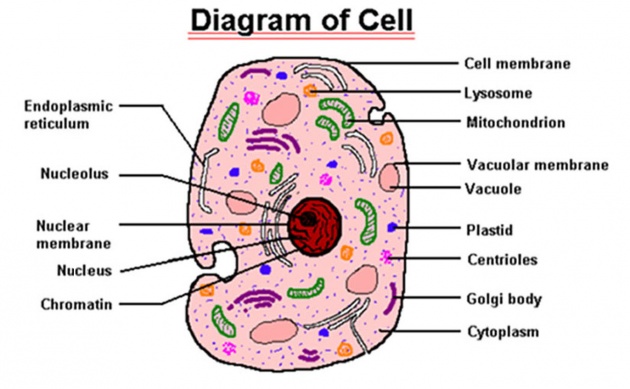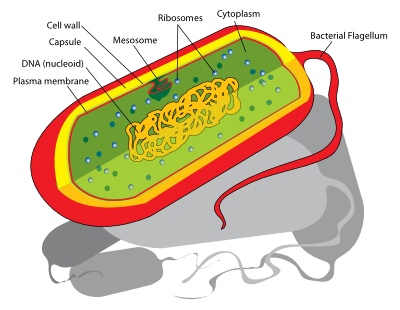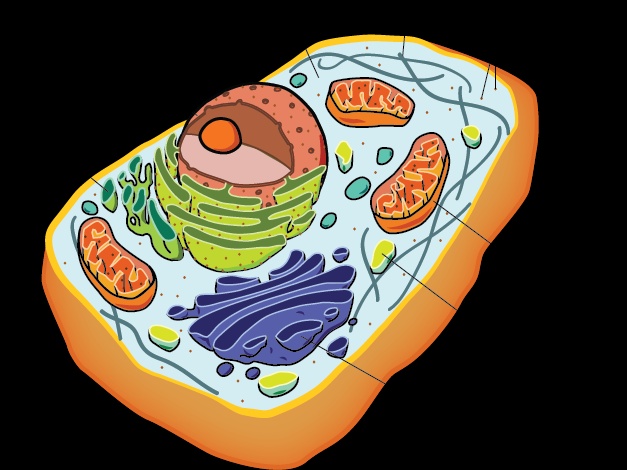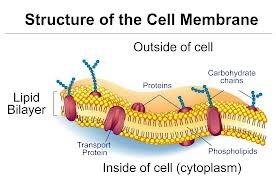The cell is the structural and functional unit of living organism. It is the smallest unit of life. It is also called the building block of life.

Size and shape: Cells are different in size and shape. They may be round, oval etc. The cells are of different sizes some are very small and some are relatively large in size.
Types of cell:
Types of cell on the basis of structure of cell There are two types of cell on the basis of structure.
1. Prokaryotic cell: This type of cell has no true nucleus and no cellular organelles. For example cell of bacteria are prokaryotic cell.

2. Eukaryotes cell: This type of cell has nucleus and organelles. For example cell of human being.

Types of cell on the basis of organism :
There are also two types on the basis of living organism.
1. Plants cell
2 .Animal cell
Structure of a typical eukaryotic cell :
Atypical eukaryotic cell consist of the following parts:
1. Cell wall (only in plants)
2. Cell membrane
3. Nucleus
4. Cytoplasm with organelles
1. Cell wall:
It is the outer most boundary of a plant cell. It is present only in plant. It is non living and semi rigid.It is made up of Cellulose and protein. Thickness of cell wall is different in different cells.
It provides support, shape, and protection to the cell.
2. Cell membrane:
It is also called plasma membrane. It is present in all plant and animal cell. Cell membrane is a thin and elastic membrane. It makes the outer layer of animal cell but in plants it lies next to the cell wall.
To explain structure of cell membrane , Singer and Nicolson gave a model known as “Fluid mosaic model” . According to this model cell membrane consists of phospholipids bi-layer in which proteins molecule float and very small amount of carbohydrates.

Function of cell membrane
It helps in passage of materials such as water, gases, ions and glucose. It also acts as receptor sites for recognizing hormones, neurotransmitter and chemicals.
TO BE CONTINUED IN NEXT BLOG



